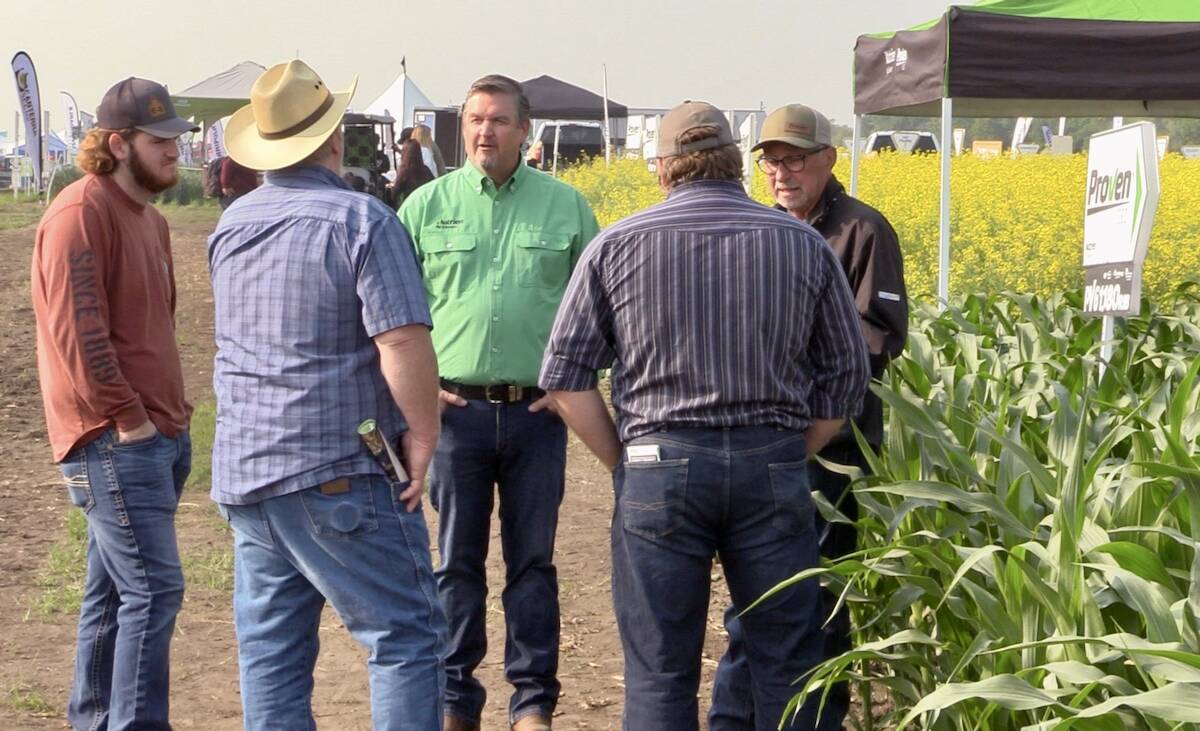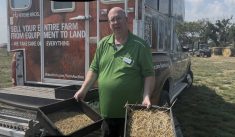SASKATOON – With the Crow Benefit gone, many prairie farmers are buying grain cleaners to save on freight expenses.
But now a university report takes exception to the assumption of cost savings.
It said farmers shouldn’t buy grain cleaners because they usually don’t pay for themselves.
But Warren Schmidt of Flaman Sales Ltd. in Southey, Sask. disagrees.
“More guys are becoming aware of the fact that they paid a lot of money, wasted money on freight.”
A cleaner enables farmers to ship grain to port with little or no waste matter, called dockage. That decreases freight charges since farmers do not pay for the additional weight of waste.
Read Also

Interest in biological crop inputs continues to grow
It was only a few years ago that interest in alternative methods such as biologicals to boost a crop’s nutrient…
Cleaning grain has become more important to farmers since the federal government ended the Crow subsidy last year.
An average cleaner can cost about $15,000 to $17,000 and, according to Schmidt, it’s worth the expense.
Norm Hall, a farmer from Wynyard, Sask., agrees and recently bought a seed cleaner.
“You can pay yourself the labor instead of somebody else,” said Hall.
Graduate students and a professor at the department of agricultural economics at the University of Saskatchewan in Saskatoon recently wrote a report that disagrees with Schmidt and Hall’s assessment.
“On-farm cleaning is not viable unless labor costs are low, there is a high rate of throughput and a high level of dockage present in the grain,” the report states.
Travis Sulewski is one of the report’s authors.
“You could spend the whole winter (cleaning) at a very slow rate, otherwise you’d have to spend a lot of money on a large-capacity cleaner to make it not such a burden on time,” he said.
According to AgPro Grain in Saskatoon, typical cereal grain contains about 2.5 percent dockage. That means with Western Canada’s average 37 million tonnes of exported grain and oilseeds, there’s about 925,000 tonnes of dockage that can be used as feed.
Good source of protein
“Grain screenings contain fairly good nutrient content,” said Vern Racz, a professor of animal nutrition at the U of S.
“We found most run between 11 and 15 percent protein on an as-fed basis.”
So is it worth farmers’ money to ship everything to port when the dockage could be coming back here as livestock feed?
Schmidt doesn’t think so.
“We were shipping our grain down to the port to get cleaned and then bringing it back and cattlemen were buying screenings and stuff from the ports and paying freight for that also. We should have been cleaning it right here,” he said.
Sulewski disagreed and said farmers who clean their grain will still be charged a minimum dockage fee, even if their grain is completely clean.
He added cleaning grain will make money only if there is a feed market nearby.
“Dockage itself is fairly light so it’s not very economical to ship it any large distance. You can only put so much on the truck.”
















